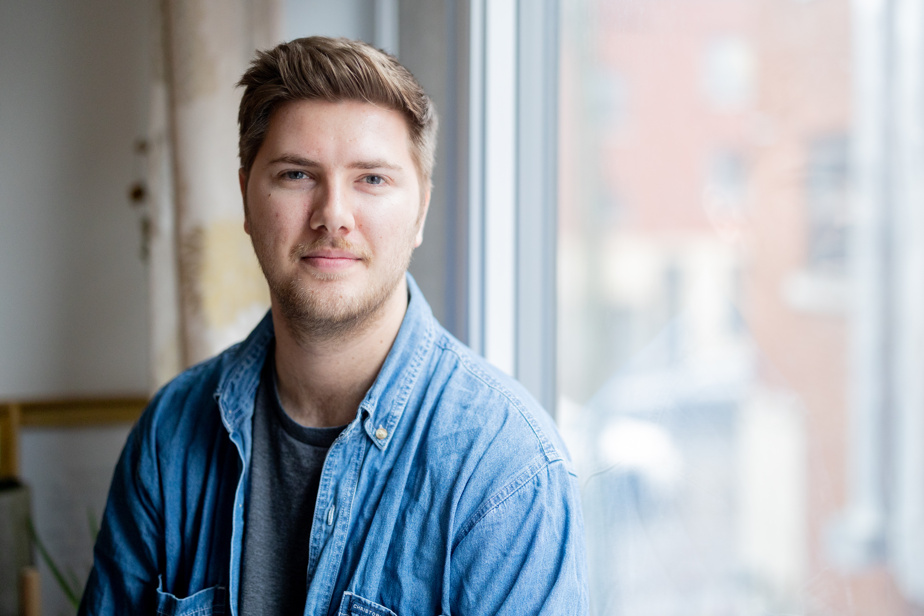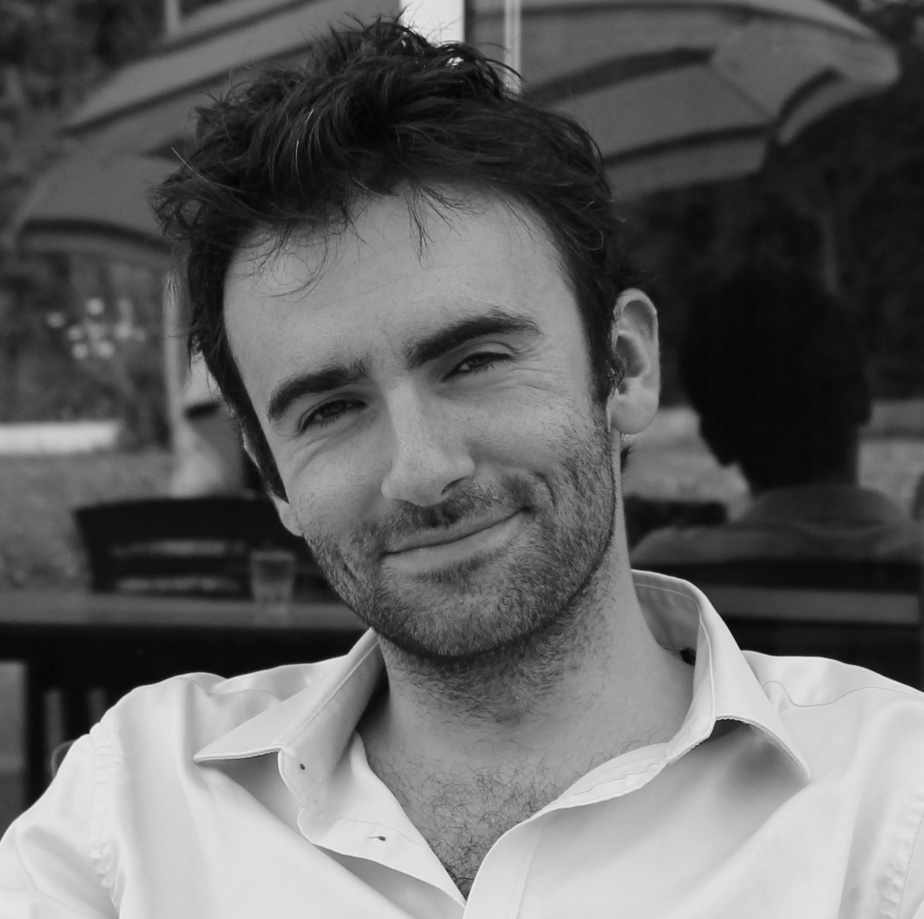From the star system to the sports world, men who identify as bisexual are so little present in the public space that the rare cases of figure arouse reactions and make the headlines. Even in schools, girls are more likely to identify as such. Where are the bisexual men?
Posted yesterday at 6:00 p.m.
As a teenager, Frédéric Desormiers would have told you that he was gay. Not because he believed in it, deep down. But that’s what we decided for him. Flamboyant personality close to his femininity, involved in theater and improv groups: his classmates didn’t need any more information to “fit” him.
“For a very long time, people said I was gay. At one point, I said to myself that if everyone thought it, it must surely be true, ”confides the young man of 24 years. But something was wrong. Frédéric Desormiers was also attracted to women.

PHOTO DOMINICK GRAVEL, LA PRESSE
Frederic Desormiers
I was so mixed up. And since we don’t speak [de bisexualité masculine], I didn’t know what it was. I did not know that existed.
Frederic Desormiers
This is the impression given by invisible male bisexuality in the public sphere.
According to the most recent data from Statistics Canada, which dates from 2018, 2.2% of women define themselves as bisexual, compared to 1.1% of Canadians. By comparison, an estimated 1.9% of men identify as gay. Bisexuals exist, therefore. But where are they?
“There are few bisexual coming outs among men. It’s probably because despite attractions, despite experiences, there are issues of masculinity,” notes Martin Blais, holder of the Chair in Sexual Diversity and Gender Plurality at the Université du Québec à Montréal ( UQAM).

PHOTO PROVIDED BY MARTIN BLAIS
Martin Blais, holder of the Chair in Sexual Diversity and Gender Plurality at the University of Quebec in Montreal
“To be a man and to feel attractions for another man is to be homosexual by association. And homosexuality is incompatible with a certain version of masculinity. »
shackles
If the bisexuality of Superman’s son caused such an outcry at the end of October, it is because it upset the rigid ideal of masculinity, adds Martin Blais.
These kind of shackles were introduced in Roman times, says Félix Dusseau, sociologist and doctoral candidate at UQAM. The Romans perceived sexuality the same way they thought of combat: by conquering.
“The Roman citizen, who was also a soldier, penetrated with his sword the enemies of Rome, in the same way as he could penetrate [sexuellement] what he wanted. Women, men, slaves. It was his status as a manly Roman citizen. But he couldn’t be penetrated, it was extremely frowned upon. »

PHOTO PROVIDED BY FÉLIX DUSSEAU
Félix Dusseau, sociologist and doctoral candidate at UQAM
Two millennia later, we still conceive of sexuality in these terms, notes Félix Dusseau, also a volunteer for the sexual rights organization Les 3 sex.
Female bisexuality “disturbs” less, since it is thought of as “surface sexuality”, without penetration. Conversely, a relationship between two men “implies” that one of them gets penetrated.
And once you cross the border between heterosexuality and homosexuality, you definitely fall into the second category, adds Martin Blais. “We no longer have access to what it means to be straight. And for a bisexual man who is in a relationship with a woman, who has a family, this image is structuring in his life. »
Tenacious prejudices
Over the past decade, homosexuals have gradually gained representation. They are elected politicians, animators, sportsmen, actors, singers. He writes books and films of their loves.
However, bisexual male models can be counted on the fingers of one hand. (In Quebec, one of the rare figures is Hubert Lenoir, who discreetly revealed his bisexuality last September in the pages of the magazine ELLE Quebec. The singer declined our interview request.)
Why is one orientation more accepted than another? “Gay people benefit from a certain capital of sympathy, since they have gone through a difficult ordeal, that of asserting themselves,” responds tit for tat Martin Blais.
Conversely, bisexual men are often perceived as homosexuals in the closet who do not have the courage to come out.
This injunction to monosexuality – this idea that there is only heterosexuality and homosexuality (and nothing in between) – encourages biphobia and discredits the reality of bisexual people, who find themselves sitting between two chairs, underlines Felix Dusseau. They are called “moody”, “unable to make choices”, he explains. They are associated with wanton sexuality and a higher risk of infidelity. (In this regard, the bisexual community had been particularly reviled in the 1980s-1990s, accused of passing HIV from gay people to heterosexuals.)
“Silence has the perverse effect of perpetuating these stereotypes, making bisexual men invisible and pushing people to doubt our existence,” François Arnaud said in an Instagram post last year. The Montreal comedian had revealed his bisexuality in a heartfelt plea.
“I’m not confused or eager to look hip. I am not disloyal. Not ashamed. Not invisible,” he added. Joined by The Press, François Arnaud did not want to comment on his publication, but said he was very happy that the subject was discussed.
Easier for bisexual women?
If we talk about the invisibilization of bisexual men, we could say the opposite of their female counterparts.
Executive Director of GRIS-Montréal, an organization that works to demystify sexual orientations and gender identities, Marie Houzeau notices the phenomenon in schools: more girls identify as bisexual than boys.
Several studies have effectively shown that sexual fluidity is generally better accepted among women, who do not have to respond to an ideal of masculinity. But this openness would itself stem… from prejudices. “There is an influence of the culture of pornography and more generally of seduction. Bisexuality fits very well with the image of the somewhat frivolous woman, the object of desire,” remarks Mme Houzeau.
Before welcoming a first bisexual competitor, reality shows like Occupation double and Too Hot to Handle will have seen their share of bisexual (or pansexual) candidates pass. And it would not be the result of chance, believes Félix Dusseau.
“Female bisexuality is very glamorized and valued in a certain sense, because it refers to a certain fantasy, typically that of two women kissing to excite the man, or the image of a threesome,” he says. -he.
A wind of change
All the experts interviewed emphasized this: to promote exploration and acceptance, it takes a vocabulary, models in which to project oneself, to recognize oneself.
But that is changing. And quickly. To the point that bisexuality is already being overtaken by a new identity. Less watertight, pansexuality is increasingly appealing to younger generations.
Several recent surveys in which Professor Martin Blais took part observed that the gap between the use of the labels bisexual and pansexual was narrowing, so much so that one might expect the second to end up overtaking the first. “There really are generational transformations. We are a little too glued to it to see it, but it is clear that it is happening. There is a wonderful openness and sensitivity in this new generation. »
What are bisexuality and pansexuality?
According to the organization SOS Homophobia, bisexuality is defined as “an emotional, physical and/or sexual attraction for both women and men”. He also defines pansexuality as “an emotional, physical, and/or sexual attraction to people regardless of gender.” A pansexual person can thus feel an attraction for a man, a woman, a non-binary person (who does not identify with either the feminine gender or the masculine gender), etc.

